Atlantic City, Atlantic County
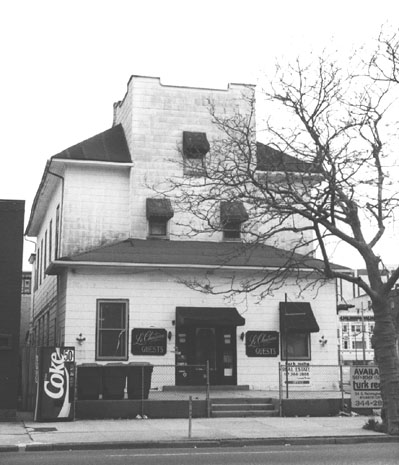
In this, PNJ's fourth endangered sites list, we have striven to
select sites that represent the diversity of New Jersey's historic resources.
The list is varied by geography, by kind of resource, and by the nature
of the threats each entry faces.
W e want to emphasize that although we call these "the ten most endangered
sites in New Jersey," it is a term of convenience. There are so many
treasured resources in jeopardy it is often impossible to know if one site
is truly more endangered than another. The sites we select are all notable
in their own terms, but sadly each represents dozens of properties in similar
straits.
We hope that by calling attention to these resources constructive attention
can be brought to bear on them and on the sites which they stand for. The
economic pressures are enormous in this economic climate. We welcome the
chance to work with anyone who believes that there should be some limits
on development. If New Jersey's communities are to remain decent places
to work and live, we must find the right balance.
Beth Israel Synagogue
Berlin Hotel Ellis
Island
Cape May Historic District
McNeal Mansion
Rural Farmsteads of New Jersey
Historic Highways
Riegelsville White
Hill Mansion Theodore Roosevelt Memorial

Built in 1872, Beth Israel was Atlantic City's first Jewish house of
worship, and today it is one of the oldest synagogue buildings in New Jersey.
An unusual structure, Beth Israel combines Moorish Revival and Shingle Style
architectural elements, many of which survive in spite of the asbestos shingles
that have covered the building since it was converted to apartments in the
1930s. The building needs some structural repair, but most of the changes
that have occurred are reversible. Until a viable new use can be found for
this building, however, there will be no justification for the expense of
rehabilitation.
Though modest, Atlantic City's Beth Israel Synagogue is an important reminder
of the social diversity that characterized the early history of New Jersey's
fabled shore resort.
Berlin Hotel
Berlin Borough, Camden County
The Berlin Hotel was a stage coach stop in the village of Long-A-Coming
on the White Horse Pike, which ran between Camden and the Atlantic coast.
The c. 1826 frame building took on its  current Gothic-Revival
appearance after the Civil War. The most important building in the Berlin
Historic District, the hotel is believed to be the oldest extant building
on the White Horse Pike. It was a feature of Berlin for many years, one
of only two buildings in the borough that is directly linked to the town's
roots in the stage coach business.
current Gothic-Revival
appearance after the Civil War. The most important building in the Berlin
Historic District, the hotel is believed to be the oldest extant building
on the White Horse Pike. It was a feature of Berlin for many years, one
of only two buildings in the borough that is directly linked to the town's
roots in the stage coach business.
But its last tenant, a restaurant, closed in 1995 and the property was recently purchased for development as a drug superstore. The new owners have offered the building to Berlin, if the borough can relocate it. Relocation would be a last resort because the building is so closely associated with the White House Pike from which it would be removed.
Cape May first developed as a summer destination early in the 19th century.
A fire razed most of its central district in 1878, when the city was at
the height of its popularity. M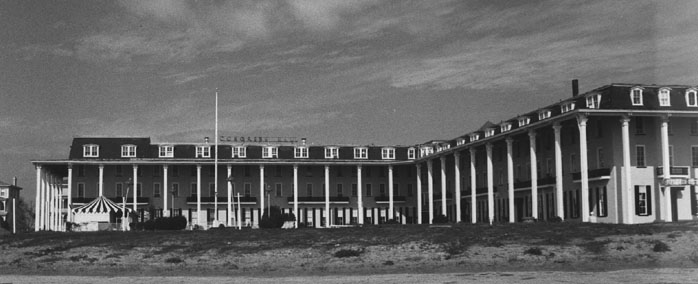 uch of Cape May was rebuilt
in a few short years, creating the remarkable concentration of wood-frame,
late-Victorian architecture that we know today: over 600 relatively intact
structures.
uch of Cape May was rebuilt
in a few short years, creating the remarkable concentration of wood-frame,
late-Victorian architecture that we know today: over 600 relatively intact
structures.
In the early twentieth century Cape May lost much of its popularity. For
sixty or seventy years it remained a quiet backwater, lacking the excitement
and amenities of other nearby shore towns. But while progress was passing
the city by, its buildings were surviving. Stimulated by a wave of restorations
and conversions undertaken mostly in the 1980s, Cape May's reputation as
a genteel Victorian resort is today well established.
But Cape May, the state's only National Historic Landmark (NHL) city is
at a crossroads, arguably a victim of its own success. The Christian Admiral
Hotel (listed on PNJ's 1995 Most Endangered roster) was demolished in 1996.
The U.S. Department of the Interior is currently reassessing the city's
landmark status. What happens to Congress Hall Hotel, the sole surviving
grand hotel, which is currently empty of any guests and awaiting restoration,
could be pivotal. A formal presentation of the proposed restoration and
redevelopment has yet to be made but is expected this year.
The McNeal Mansion was built c 1890 by Andrew McNeal, founder of the
U.S. Pipe Company. U.S. Pipe added three wings onto the mansion and renovated
its interior when it used the building as a headquarters in the years before
World War II. 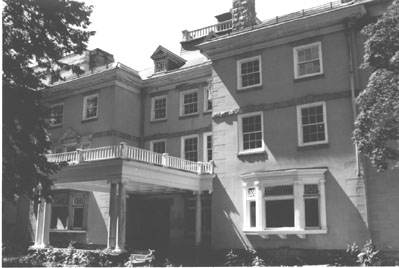 Many of the architectural features of the grand residence
survive, but the significance of the property derives not only from the
mansion's survival, but from the combined property. The building that grew
from the grand residence into the company headquarters represents the period
in the industrial history of New Jersey when late nineteenth century firms
first associated with local captains of industry were growing beyond their
connection with a dynamic founder into publicly held corporations with no
direct ties to the founding families.
Many of the architectural features of the grand residence
survive, but the significance of the property derives not only from the
mansion's survival, but from the combined property. The building that grew
from the grand residence into the company headquarters represents the period
in the industrial history of New Jersey when late nineteenth century firms
first associated with local captains of industry were growing beyond their
connection with a dynamic founder into publicly held corporations with no
direct ties to the founding families.
Rural Farmsteads of New Jersey
Statewide
 For most of its history New Jersey's nickname, "The
Garden State," was well earned. Today one might wonder where the appellation
ever came from. In some areas of the state gentle reminders of our agrarian
past remain. But farmlands, and the historic farmhouses and outbuildings
that have graced them for hundreds of years, are disappearing almost daily.
According to figures from the N.J. Department of Agriculture, we have lost
80,000 acres of farmland in the last decade.
For most of its history New Jersey's nickname, "The
Garden State," was well earned. Today one might wonder where the appellation
ever came from. In some areas of the state gentle reminders of our agrarian
past remain. But farmlands, and the historic farmhouses and outbuildings
that have graced them for hundreds of years, are disappearing almost daily.
According to figures from the N.J. Department of Agriculture, we have lost
80,000 acres of farmland in the last decade.
Developers usually say that it is not economically feasible to retain the
farmsteads, and local preservation ordinances, when they exist, generally
do not offer enough protection to save these threatened resources. Sometimes
compromises are achieved, but the deals often include moving the buildings,
or constructing new homes so close to historic structures or landscapes
that historical context is lost forever.
Examples abound, but the Hines Farmstead in Evesham Township, Burlington
County, represents the threatened rural farm resources of New Jersey. A
locally designated historic site, the Hines Farmstead is a collection of
six farm buildings, including a c. 1790 residence, which retains a high
degree of architectural integrity, a barn with interesting features, a garage,
and three storage buildings. This is one of the few remaining farm complexes
in the township. A sixty-five unit townhouse development proposed to be
built on this site is currently under consideration.
Roads give definition to our landscape. They enable us to get from place
to place, of course, but more importantly, in our automobile-dependent culture
we know where we are by the roads we travel. Many highways in New Jersey
have strong associations with important events of the past. Others retain
their historical character because their settings, scale, and alignment
are relatively intact.
But these older roads are under strong pressure from an ever growing number
of cars, and longer and heavier trucks. Moreover, federal transportation
subsidies are available for new construction but not for maintenance of
existing roads or bridges. All over the state traffic engineers propose
piecemeal road widenings instead of wholesale projects that might require
detailed environmental review or trigger public opposition. Concern for
historic roadways is rising all over the state, reflected by the increasing
number of nominations to the New Jersey and national registers of historic
places that include historic highways.
One example of a highway that is currently of great concern is the old main
road between New Brunswick and Trenton -- now U.S. Route 206 between Trenton
and Princeton, and New Jersey Route 27 between Princeton and New Brunswick.
An eleven-mile stretch of these roads, between Kingston and Lawrenceville,
passes six national landmarks and seven national register districts. It
also runs by Princeton University, Princeton Theological Seminary, the Lawrenceville
School, and the current, as well as the former, governor's residence. It
has the oldest bridge in the state highway system, among other features.
No one wants to face more traffic jams than we already experience, but as
the number of vehicles registered and miles driven continue to rise, pressures
to "improve" historic roadways will continue to mount.
One of New Jersey's most original works of public sculpture, the Theodore
Roosevelt Memorial stands at the center of Roosevelt Commons in the Borough
of Tenafly. It was carved in 1928 by local sculptor Trygve Hammer, and his
assistant Fritz Hammargren. Hammer was nationally known for his animal sculpture;
this Memorial is one of the best examples of his work. It consists of a
highly realistic stone relief sculpture ornamented with a portrait of former
U.S. President Theodore Roosevelt surrounded by a variety of animals and
birds. Flanking the relief are two life-sized,  sculpted bears.
The sculpture is set on a circular stage surrounded by a stone wall, the
surface of which is inscribed with quotations that reflect Roosevelt's devotion
to conservation. It is sheltered by mature sycamore trees, a remaining feature
of the plan for Roosevelt Commons conceived by landscape architect Marjorie
Sewel Cautley, known for her work in nearby Radburn.
sculpted bears.
The sculpture is set on a circular stage surrounded by a stone wall, the
surface of which is inscribed with quotations that reflect Roosevelt's devotion
to conservation. It is sheltered by mature sycamore trees, a remaining feature
of the plan for Roosevelt Commons conceived by landscape architect Marjorie
Sewel Cautley, known for her work in nearby Radburn.
There are nineteen publicly accessible outdoor monuments to Theodore Roosevelt
in the nation. The Tenafly work is the only one to commemorate his conservation
efforts, which included halting the destruction of the Palisades, a portion
of which extends into Tenafly.
Time and weather have eroded the Memorial's surface. The sculpture is sorely
in need of professional conservation treatment. The Borough of Tenafly has
committed $50,000 toward the restoration of the Memorial, approximately
a third of the estimated need. It is uncertain where the remainder will
come from.
White Hill Mansion
Fieldsboro, Burlington County
This early 18th century brick house, located on a high bluff overlooking
the Delaware River, was home to the Field family for whom the town is named.
Their descendants married into the well-known Stockton family, and the poet
Annis Boudinot Stockton, wife of Richard Stockton "the Signer"
lived out her final years at White Hill Mansion. Annis Stockton's grandson,
Robert S. Field, a future U.S. Senator and federal judge, was born at White
Hill Mansion.
This distinguished residence was added to in the nineteenth century, and
remodeled into a restaurant in the early twentieth. It was a well-known
New Jersey restaurant until its purchase as part of a large parcel of land
several years ago by an out of state chemical company. White Hill Mansion,
which has been vacant since its sale, has been vandalized repeatedly over
the years, and is currently not being maintained by its owners. The residents
of tiny Fieldsboro take great pride in this meaningful piece of New Jersey
history, and the mayor has been negotiating with the current owners in an
attempt to transfer ownership to the municipality. However, even if Fieldsboro
were successful in obtaining ownership, the costs to stabilize and rehabilitate
White Hill Mansion would be staggering for such a small municipality.
This cozy village, where the Musconetcong River meets the Delaware River, was the site of grist and saw mills in the eighteenth century. In the middle of the nineteenth century industrial development was enabled by the introduction of railway lines, and John L. Riegel built a paper mill at what became known as Riegelsville. In 1873 it incorporated as the Warren Manufacturing Co., and quickly became a major producer of rope and glassine paper. The company built its main plant, over 300 feet long, above the shores of the Delaware River. At the crossing of the Delaware River stands a remarkable cantilever bridge built by the Roebling Company in 1904. The paper mill at Riegelsville remained in operation until 1982.
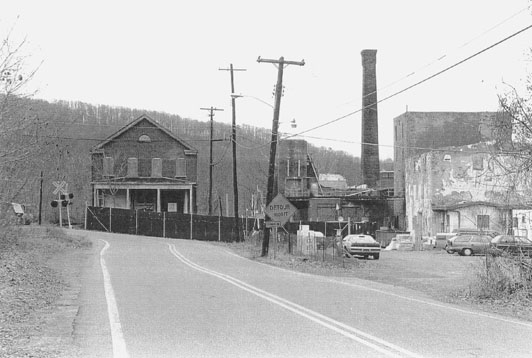 The mills at Riegelsville have served as the focal point
of the village throughout its history. But the mill site is contaminated
with PCBs, which over the years have not only soaked into the ground but
into some of the concrete walls of the mill buildings. Under the authorization
of New Jersey's Industrial Site Recovery Act (ISRA), Riegel Products, the
current owner, is cleaning up the site. The cleanup, is being done without
regard for historic resources; it includes plans to demolish the mill buildings.
The New Jersey Register of Historic Places law does not apply because Riegelsville
is not listed in the Register. If the Riegel Paper mill is demolished a
large gap will be left in the heart of what is likely a register-eligible
historic district that, if listed, would be afforded a degree of protection
from ISRA funded projects. Archeologists are also concerned with the high
potential for important prehistoric artifacts to be found at this site.
The mills at Riegelsville have served as the focal point
of the village throughout its history. But the mill site is contaminated
with PCBs, which over the years have not only soaked into the ground but
into some of the concrete walls of the mill buildings. Under the authorization
of New Jersey's Industrial Site Recovery Act (ISRA), Riegel Products, the
current owner, is cleaning up the site. The cleanup, is being done without
regard for historic resources; it includes plans to demolish the mill buildings.
The New Jersey Register of Historic Places law does not apply because Riegelsville
is not listed in the Register. If the Riegel Paper mill is demolished a
large gap will be left in the heart of what is likely a register-eligible
historic district that, if listed, would be afforded a degree of protection
from ISRA funded projects. Archeologists are also concerned with the high
potential for important prehistoric artifacts to be found at this site.
Riegelsville represents the many early industrial sites in New Jersey which
are in need of some environmental cleanup, a process which does not always
recognize the existence of significant historic and prehistoric resources.
Preservation New Jersey anticipates that New Jersey will be victorious
in its suit against New York, currently before the U.S. Supreme Court, for
jurisdiction over the approximately twenty four acres of landfill that were
added to Ellis Island after it became a federal immigration station. Although
the entire island is administered by the National Park Service, the area
that is likely to be declared within New Jersey's boundaries contains a
large number of extremely valuable buildings, some of which are currently
in sev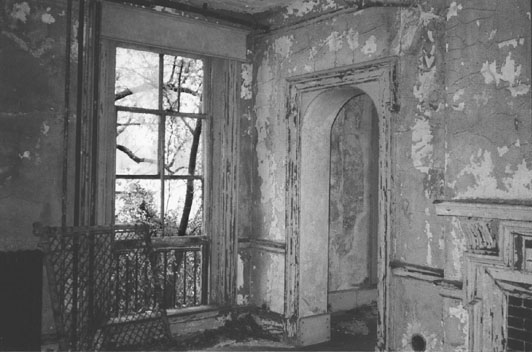 ere states of disrepair. Structures such as the laundry,
contagious disease wards, operating rooms, and staff housing are essential
to telling the full story of Ellis Island. But we are in danger of losing
them. With some forty percent of our population linking itself to immigrants
who were processed at Ellis Island, the fate of the southern portion of
Ellis Island is of national interest.
ere states of disrepair. Structures such as the laundry,
contagious disease wards, operating rooms, and staff housing are essential
to telling the full story of Ellis Island. But we are in danger of losing
them. With some forty percent of our population linking itself to immigrants
who were processed at Ellis Island, the fate of the southern portion of
Ellis Island is of national interest.
Debates over the development of a part of the island, and over a pedestrian
bridge from Liberty State Park will likely surface soon after the court
decision is announced. But the majority of the buildings on Ellis Island
are in need of immediate attention. Some are nearly in ruins now. If they
are not stabilized soon, they will be gone. The amount of money required
for the challenge is staggering. The Main Hall at Ellis Island was restored
through a public private partnership. It will take another such effort to
save these ancillary buildings. The National Park Service is willing, but
it needs a significant increase in its Congressional appropriation before
it can make any progress.